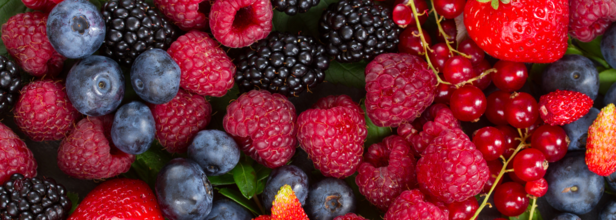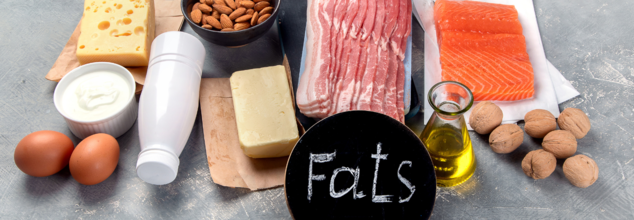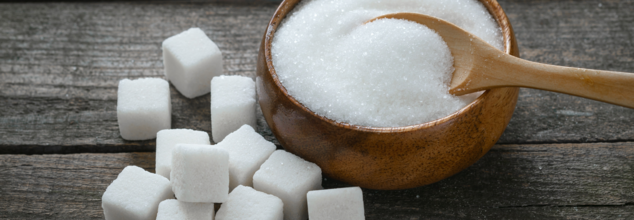
Credits: Canva
8 Healthiest Berries You Could Ever Eat
Berries are among the healthiest fruits you can eat. Packed with fiber, vitamin C, and antioxidant-rich polyphenols, they’re more than just tasty — they’re a nutritional powerhouse. Regular consumption of berries has been linked to improved heart health, better blood sugar regulation, and protection against chronic diseases like diabetes, cancer, and cognitive decline.
You can enjoy them raw, in smoothies, desserts, or even as part of savory dishes. Here are eight of the healthiest berries worth adding to your plate.
Blueberries: Tiny Brain Boosters
Blueberries are rich in vitamin K and anthocyanins, which give them their deep blue color and potent antioxidant properties. One cup offers 84 calories and 3.6 grams of fiber. These berries may help lower LDL cholesterol, improve artery function, and support brain health by enhancing neuroplasticity and reducing inflammation.
Raspberries: Fiber-Rich and Gut-Friendly
A cup of raspberries contains just 64 calories but packs in 8 grams of fiber and 36% of your daily vitamin C needs. Rich in ellagitannins, raspberries help fight oxidative stress. Some studies show they may improve immune markers and even positively affect gut bacteria in people with prediabetes.
Goji Berries: Ancient Fruit, Modern Benefits
Goji berries (or wolfberries) have been used in Chinese medicine for centuries. Just 28 grams of the dried fruit delivers high amounts of vitamin A and iron. Research shows goji berries may offer antioxidant, antimicrobial, and prebiotic benefits, possibly aiding in eye health, cancer prevention, and improved lipid profiles.
ALSO READ: This 5-letter Fruit Does A Lot More Than Just Keeping Doctors Away
Strawberries: Immune-Boosting All-Rounders
A favorite in salads and desserts, strawberries are low in calories and high in vitamin C — one cup provides a whopping 94% of your daily value. They’ve been linked to improved heart health, inflammation reduction, and even better insulin sensitivity when consumed regularly.
Bilberries: The European Cousin of Blueberries
Native to Europe, bilberries are high in vitamin C and manganese. Like blueberries, they contain anthocyanins that may support heart and eye health, regulate blood sugar, and reduce post-exercise muscle inflammation. Some studies even suggest benefits for people with type 2 diabetes and those recovering from heart attacks.
Açaí Berries: The Amazon Superfood
Açaí berries are most often consumed as freeze-dried powder or juice. Though research is still emerging, early findings point to their potential in reducing oxidative stress and supporting cardiovascular, neurological, and metabolic health. They may even help lower cholesterol and blood sugar levels when consumed regularly.
Cranberries: Nature’s UTI Fighter
Best known for preventing urinary tract infections, cranberries contain compounds that prevent bacteria from sticking to the urinary tract lining. A cup of raw cranberries gives you 3.6 grams of fiber and vitamin C. They may also help guard against stomach ulcers and support heart health — just go easy on the sweetened juice.
Grapes: Heart and Brain Supporters
Often overlooked as a berry, grapes are rich in polyphenols found in their skins and seeds. These compounds support heart health by lowering blood pressure and inflammation. Preliminary research even suggests grape juice may enhance cognitive function in older adults.

Credits: Canva
Healthy vs Unhealthy Fats: All That You Need To Know
For years, fat has been blamed for poor health. However, the truth is that you body needs fat. So, why do we hate fat so much? The key is actually in knowing which fat helps you and which ones harm.
So, here we have a guide for you that will help you understand the fats your body needs:
What Are Fats?
They are also called lipids. They are made of fatty acids and glycerol. They help your body make hormones, absorb nutrients, and keep cells healthy. The three main types of fats are:
- Saturated Fats: They are solid at room temperature and are found in things like butter or red meat.
- Unsaturated Fats: They are liquid at room temperature, mainly found in oils, nuts, and fish. They are also categorized as monounsaturated and polyunsaturated.
- Trans Fats: They are artificial fats which are found in processed foods. These are the most harmful fats and must be avoided.
Monounsaturated Fats (MUFAs)
They are heart healthy fats that can actually help you lower bad cholesterol. They are mainly found in olive oil, avocados, almonds, cashews, and peanuts. It helps lower the risk of heart disease, helps with a better blood sugar control, and reduces inflammation.
Polyunsaturated Fats (PUFAs)
These include the omega-3 and omega-6 fatty acids, which are essential for your body, but your body cannot make it on its own. These can be found in various sources. For omega-3 fatty acids, consume fatty fish like salmon or sardines, or you can have flaxseeds, chia seeds, and walnuts.
- Omega-6 fatty acids are found in vegetable oils like sunflower or safflower, and in soyabeans, seeds, and poultry.
- They can support brain function, fight inflammation, and keep your heart and skin healthy.
Which Fats Are Not That Great For You?
Trans Fats
These are artificial fats made to extend shelf life. They’re the worst type for your health.
Found in:
- Packaged snacks
- Fried fast food
- Some margarines and baked goods
- Raise bad cholesterol (LDL)
- Lower good cholesterol (HDL)
- Increased risk of heart disease and type 2 diabetes
Saturated Fats
These aren't as bad as once thought, but too much may still be risky for some people.Found in:
- Butter, cheese, ghee
- Red meat
- Coconut oil, palm oil
Tips:
- Replace with healthy fats when possible
- Try not to go overboard—moderation matters
- Dairy-based saturated fats may be less harmful than processed meats
Why Fats Matter
Brain Health – DHA (a type of omega-3) is key for memory and brain function.
Inflammation – Omega-3s calm it down; too much omega-6 or trans fat can make it worse.
Diabetes Risk – Healthy fats can improve insulin sensitivity and protect your heart.
How Different Diets Handle Fats
- Mediterranean Diet – Full of olive oil, fish, and nuts. A great example of healthy fat use.
- Keto Diet – High in fat, but quality matters. Choose good fats, skip processed meats.
- Vegan/Vegetarian Diets – Include plant-based fats like nuts, seeds, and avocados. Algae-based omega-3 supplements can help too.
What is important to understand is that fat is not your enemy. It is rather an essential part of your healthy diet. The importance is that you focus on the right kind of fat.

Credits: Canva
How Much Sugar Is Too Much Sugar?
Sugar is one of the most controversial ingredients in modern diets. Everyone is talking about it. How much to take? To consume it or not? How can one limit it? But sadly, it is everywhere. It is in your cereals, in your sauces and in your so called "health bars". However, it is important to understand that not all sugar is the same. The reality is different from blanket warnings. So, to make it easier for you, here is a break down of what sugar really is and how it affects your body.
What Is Sugar?
It is a carbohydrate that gives foods its sweet taste. It also exists in many forms, natural and as added ingredients.
Naturally occurring sugars include fructose which are present in fruits; lactose, which are present in dairy; maltose, which are present in sprouting grains; and glucose, which is body's go-to fuel and found in fruits, and is also created during digestion.
Whereas, added sugars are he one that comes after processing. They are called sucrose, or table sugar, high-fructose or corn syrup, honey agave nectar, maple syrup, and coconut sugar.
While your body ultimately breaks down all kinds of sugars into glucose or fructose, the source and accompanying nutrients, which could be fiber or fat may impact on how it is being absorbed in your body.
Why Too Much Sugar Could Be A Problem?
High sugar intake can lead to reduction in insulin sensitivity and also increase the risk of type 2 diabetes. It can also promote fat buildup in the liver. Sugary foods also lack fiber or protein, so you are more likely to overeat. It could also feed oral bacteria and contribute to cavities.
However, not all sugars are equally harmful.
How Much Sugar Can You Eat?
As per the World Health Organization (WHO), you must keep your sugar under 10% of your total calories. The ideal limit is 5%, which is around 6 tsp of sugar in total.
As per the American Heart Association, men can have 9 tsp of sugar, while women can have 6 tsp of sugar.
As per the US Dietary Guidelines, sugar must be kept under 10% of your daily calories, which is about 50g in a 2,000 calorie diet.
However, in reality, an average American consumes around 77g of sugar, way above the limit.
What All Has Added Sugar In It?
Added sugar isn’t just in desserts. It shows up in:
- Flavored yogurts (15–25g/serving)
- Pasta sauces (up to 12g/half-cup)
- Breakfast cereals and granola (10–15g/serving)
- Salad dressings and protein bars
To manage your intake:
- Read labels for “added sugars”
- Learn sugar’s many names (like dextrose or maltose)
- Choose whole, unprocessed foods
- Use cinnamon or fruit as natural sweeteners
What you must keep in mind is that one size does not fit all. Athletes may benefit from some quick-digesting sugars during or after exercise. Whereas children are more sensitive to sugar's effects and early eating habits. People with diabetes or metabolic conditions must also stay careful and monitor their sugar consumption.
Sugar isn’t evil—it’s context that matters. Focus on reducing added sugars, not cutting all sweet foods out. Occasional treats are fine if your overall diet is nutritious. By staying informed, you can enjoy sweetness without compromising your health.

Credit: Canva
Two Potassium-Rich Foods That Could Lower Blood Pressure Better Than Cutting Salt
People living with high blood pressure are often encouraged to limit their daily salt intake to under 6g. But new findings suggest that merely cutting back on sodium may not be enough. Experts now recommend increasing dietary potassium—commonly found in bananas and broccoli—as a more impactful way to manage blood pressure levels.
Researchers at the University of Waterloo in Canada have developed a mathematical model that emphasizes the importance of the balance between potassium and sodium in the diet. Their findings indicate that raising the ratio of potassium to sodium may be more effective for blood pressure control than focusing solely on reducing salt.
“Usually, when we have high blood pressure, we are advised to eat less salt,” explained Dr Anita Layton, a professor of applied mathematics, computer science, pharmacy, and biology at the university. “Our research suggests that adding more potassium-rich foods to your diet, such as bananas or broccoli, might have a greater positive impact on your blood pressure than just cutting sodium.”
Excess salt in the diet can lead the body to retain water, which adds pressure to blood vessel walls and may eventually cause damage to organs such as the kidneys. While reducing salt is beneficial, potassium offers a counteracting effect by helping the body expel sodium through urine and relax blood vessel walls.
Both potassium and sodium are electrolytes—substances essential for regulating bodily functions such as nerve signaling, muscle contractions, and fluid balance. The model created by the Waterloo team shows how increasing potassium can restore a more favorable electrolyte balance, supporting healthy blood pressure regulation.
Study leader Melissa Stadt, a PhD candidate in Waterloo's Department of Applied Mathematics, highlighted that human diets have drastically changed over time. “Early humans ate lots of fruits and vegetables, and as a result, our body's regulatory systems may have evolved to work best with a high potassium, low sodium diet,” she said. "Today, western diets tend to be much higher in sodium and lower in potassium. That may explain why high blood pressure is found mainly in industrialised societies, not in isolated ones."
16 Million People In UK Have High Blood Pressure
Currently, around one-third of adults in the UK—an estimated 16 million people—are thought to have high blood pressure. Alarmingly, more than five million of them remain undiagnosed, putting them at greater risk for heart attacks, strokes, and kidney disease.
These new findings suggest that a shift in dietary focus could make a meaningful difference. Rather than concentrating solely on what to avoid, such as salt, patients may benefit even more by including potassium-rich foods like spinach, sweet potatoes, lentils, and avocados as part of their daily meals.
As research continues to uncover the intricate connections between diet and health, one thing is clear: the solution to high blood pressure may lie not just in subtraction but in smarter additions to our plates.
© 2024 Bennett, Coleman & Company Limited

